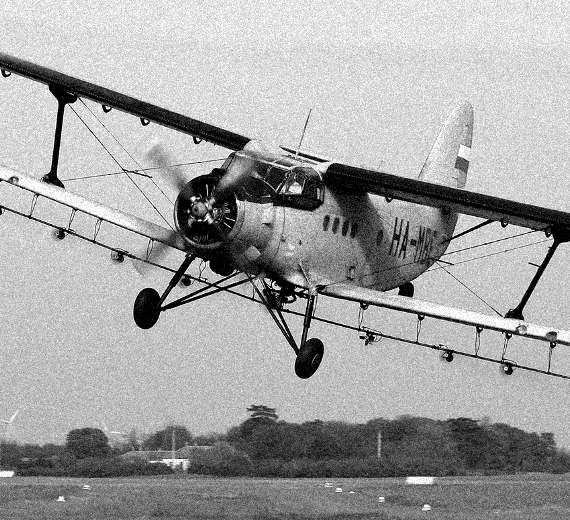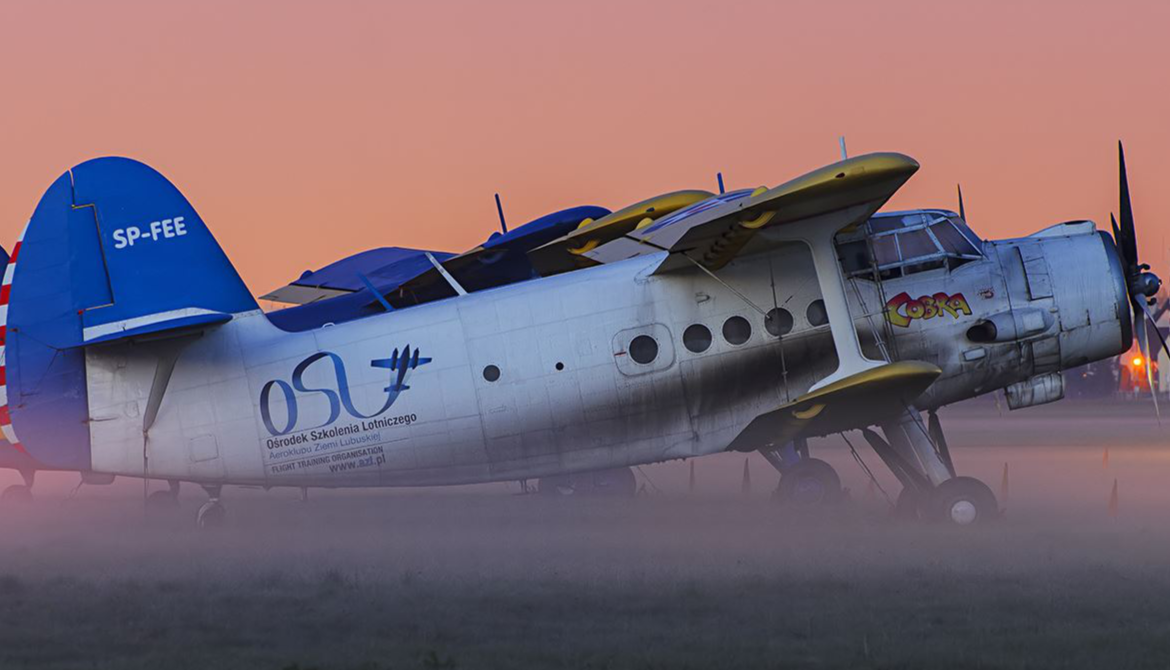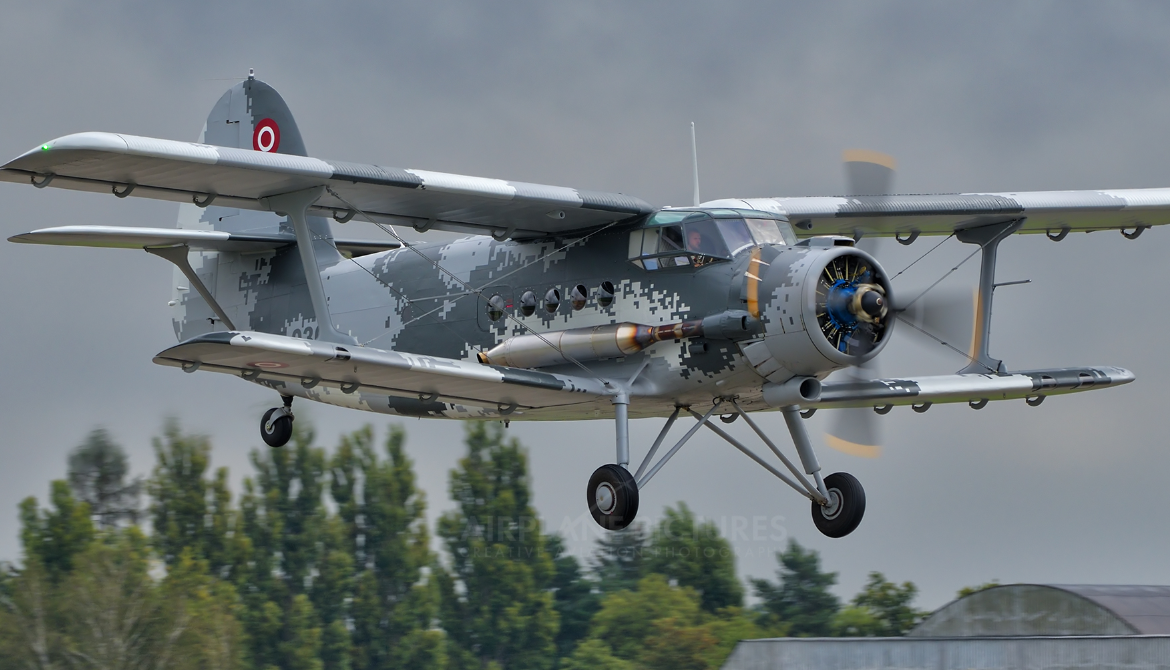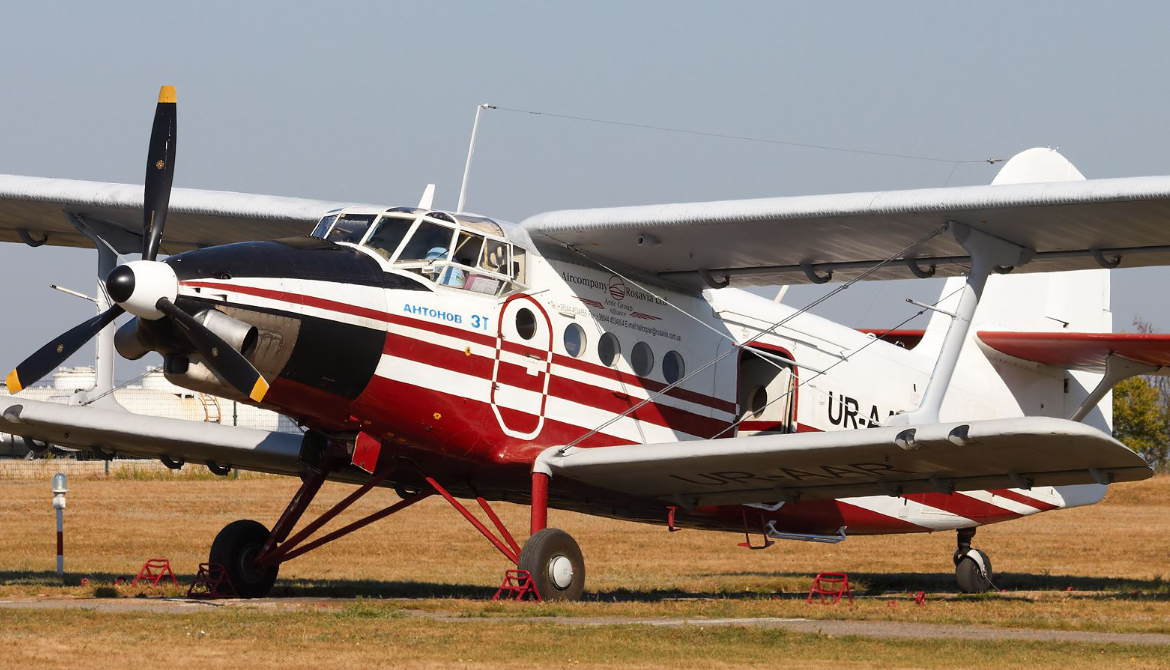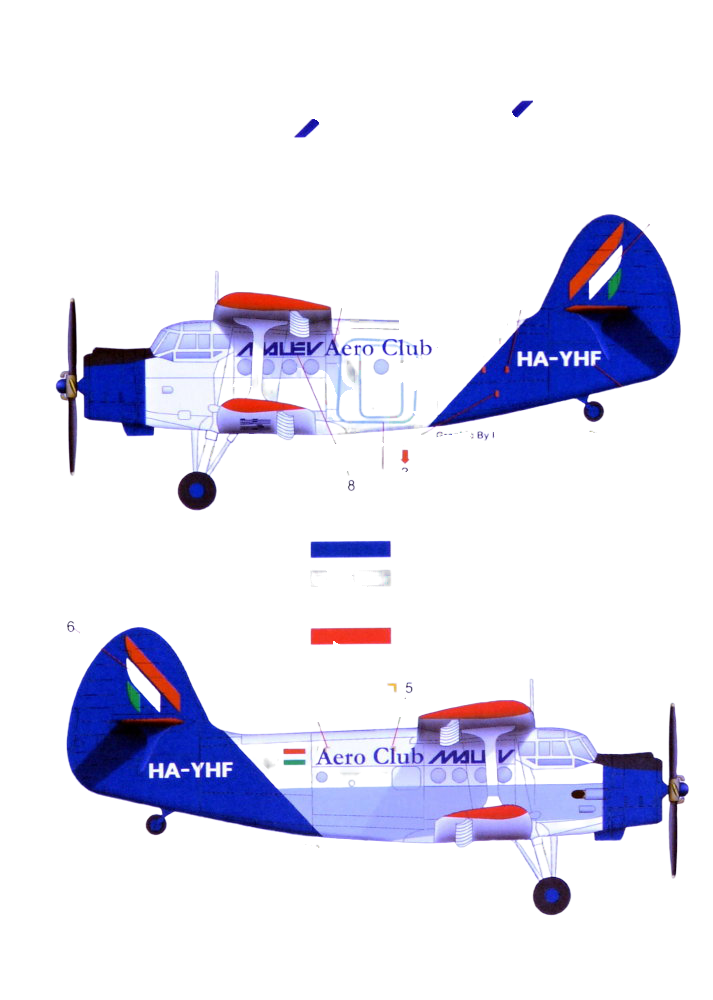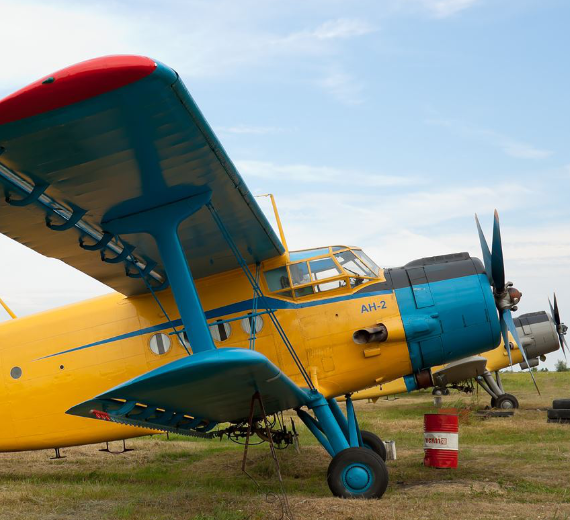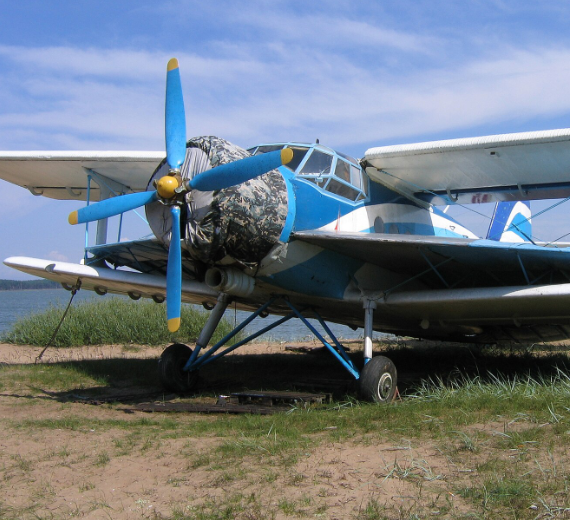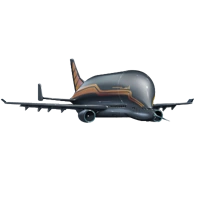Antonov An-2 Colt "kukuruznik"
 |
|
| Type | Agricultural, utility aircraft and military transport aircraft |
|---|---|
military transport aircraft
Manufacturer Antonov
Designer Oleg Antonov
First flight 31 August 1947
Status Series production may still continue in China as the Shijiazhuang Y-5; engine refitting project began in 2013
Primary users Soviet Union (historical)
North Korea
China
Produced 1947–2001
Number built 18,000+
Variants Antonov An-3
.
History WSK "PZL-Mielec
Antonov An-2 Colt "kukuruznik"
First flight 31 August 1947
Produced 1947–2001

The Antonov An-2 ("kukuruznik"—corn crop duster; USAF/DoD reporting name Type 22, NATO reporting name Colt) is a Soviet mass-produced single-engine biplane utility/agricultural aircraft designed and manufactured by the Antonov Design Bureau beginning in 1947. Its durability, high lifting power, and ability to take off and land from poor runways have given it a long service life. The An-2 was produced up to 2001 and remains in service with military and civilian operators around the world.
The An-2 was designed as a utility aircraft for use in forestry and agriculture, but the basic airframe is highly adaptable and numerous variants of the type have been developed; these include hopper-equipped versions for crop-dusting, scientific versions for atmospheric sampling, water-bombers for fighting forest-fires, flying ambulances, float-equipped seaplane versions and lightly armed combat versions for dropping paratroops. The most common version is the An-2T 12-seater passenger aircraft. All versions (other than the An-3 and the An-2-100) are powered by a 750 kW (1,010 hp) nine-cylinder Shvetsov ASh-62 radial engine, which was developed from the Wright R-1820. The An-2 typically consumes 2.5 L/min (0.66 US gal/min; 0.55 imp gal/min
Design and development
Origins[edit]
The Antonov An-2 was designed to meet a 1940s Soviet Ministry of Forestry requirement for a replacement for the much lighter, largely wooden-airframed Polikarpov Po-2, which was used in large numbers in both agricultural and utility roles. Antonov designed a large single bay biplane of all-metal construction, with an enclosed cockpit and a cabin with seats for twelve passengers. The first prototype, designated SKh-1 and powered by a Shvetsov ASh-21 radial engine, flew on 31 August 1947. The second prototype was fitted with a more powerful Shvetsov ASh-62 engine, which allowed the aircraft's payload to be significantly increased from 1,300 to 2,140 kg (2,870 to 4,720 lb), and in this form it was ordered into production.

0
KmCeiling
0
KmCombat RANGE
0
Km/hAircraft Speed
0
Max Crew
Photo Gallery
WSK "PZL-Mielec
Antonov An-2 Colt "kukuruznik"


WSK "PZL-Mielec
Antonov An-2 Colt "kukuruznik"
First flight 31 August 1947
Produced 1947–2001
General Info
-
-
- Crew: 1–2
- Capacity: 12 passengers / 2,140 kg (4,718 lb)
- Length: 12.4 m (40 ft 8 in)
- Upper wingspan: 18.2 m (59 ft 9 in)
- Lower wingspan: 14.2 m (46 ft 7 in)
- Height: 4.1 m (13 ft 5 in)
- Wing area: 71.52 m2 (769.8 sq ft)
-
Powerplant
-
-
- Empty weight: 3,300 kg (7,275 lb)
- Gross weight: 5,440 kg (11,993 lb)
- Fuel capacity: 1,200 L
- Powerplant: 1 × Shvetsov ASh-62IR 9-cylinder air-cooled supercharged radial piston engine, (1,010 hp)
- Propellers: 4-bladed constant-speed propeller
-
Performance
- Maximum speed: 258 km/h (160 mph
- Cruise speed: 190 km/h (120 mph,
- Stall speed: 50 km/h (31 mph,
- Range: 845 km (525 mi, 456 nmi)
- Service ceiling: 4,500 m (14,800 ft)
- Rate of climb: 3.5 m/s (690 ft/min)
.
Links to Youtube & Others
An-2G (a.k.a. An-2Geo) – During 1974 WSK-Mielec developed a geo-physical survey aircraft for the Polish State Geophysical Survey Agency (Państwowe Przedsiębiorstwo Poszukiwań Geofizycznych), with equipment for measuring magnetic fields, radiation and other instruments for prospecting.
Antonov An-2 Colt "kukuruznik"
The PZL TS-11 Iskra (English: Spark) is a Polish jet trainer, developed and manufactured by aircraft company PZL-Mielec.
Youtube Link
Recorded Nov. 14th 2009, I had the opportunity to fly with Dr. Wayne Clark in his PZL-WSK-Mielec TS-11 ISKRA JET
